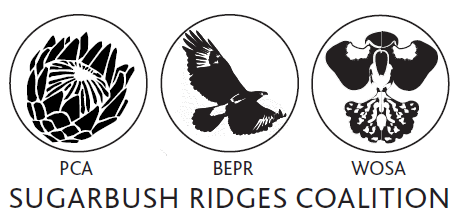Tridactyle tricuspis
Description
Slender to robust epiphyte, Stems erect and up to 200mm long, but usually much shorter, 6mm in diameter. Roots produced along the length of the stem to a base of leaves. Leaves closely overlapping in 2 rows, linear or strap-shaped, unequally bilobed. Inflorescences fairly dense, borne below the leaves and up to 120mm long. 10-25 flowers greenish to cream, up to 11mm long. Clump forming.
Distribution in South Africa
From northern Eastern Cape, through Kwa Zulu Natal and Mpumulanga and into Limpopo.
Please submit your orchid photographs to OrchidMAP as citizen science records to improve this map.
Register on the Virtual Museum or login.
Typical habitat
Common epiphyte growing high up in temperate forests, from 700-1,800m. Can also occur on exposed boulders and cliff faces adjacent to these forests.
Flowering Period
This species typically flowers between February and April. Scented at night.
Distribution elsewhere in Africa
Widespread in tropical Africa.
Conservation Status
Not endangered.
Click on the distribution map to see the latest conservation status also refer to Provincial Species List on this site for Provincial Red and Orange listing and SANBI Orchid red list.
All orchids are protected under CITES regulations.
References and additional information
Johnson, S.D., Bytebier, B. Stärker, H. (2010). Orchids of South Africa: A field guide. Struik Nature, Cape Town, South Africa.
La Croix, I.F. la Croix, E. (1997). African Orchids in the Wild and in Cultivation. Timber Press, Portland, Oregon, USA.
McMurtry, D., Grobler, L., Grobler, J., Burns, S., (2008). Field Guide to the Orchids of Northern South Africa and Swaziland. Umdaus Press.
This genus and species article was written by Duncan Mc Farlane, edited by Karsten Wodrich and published 2019-05-24.

